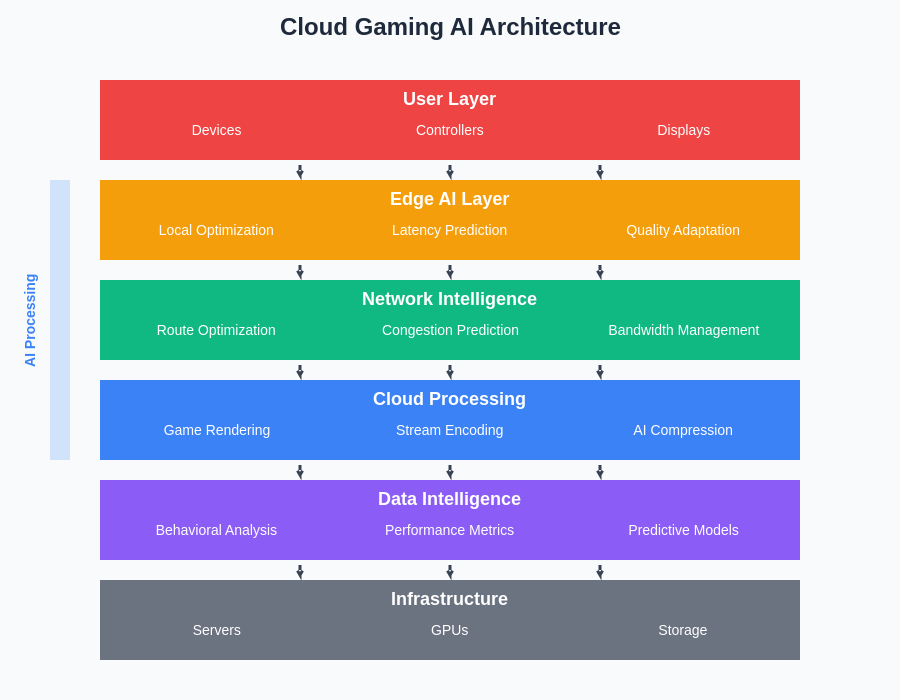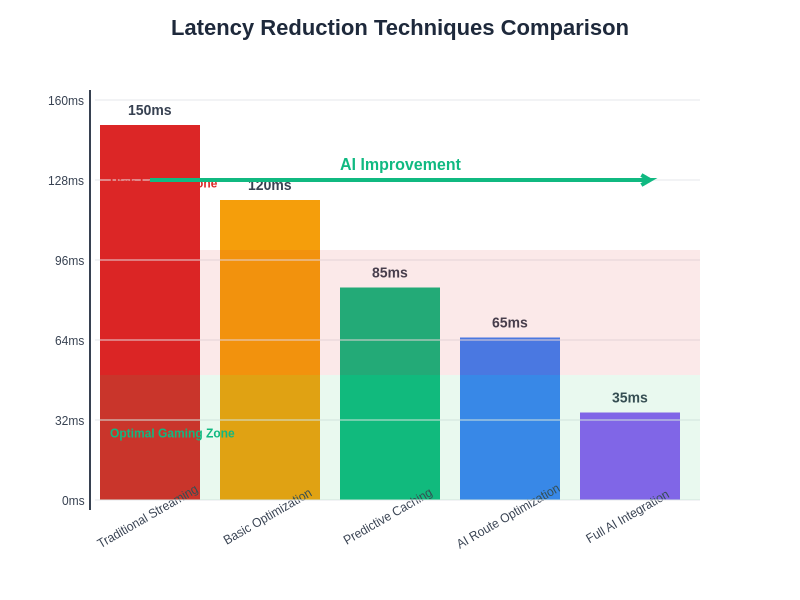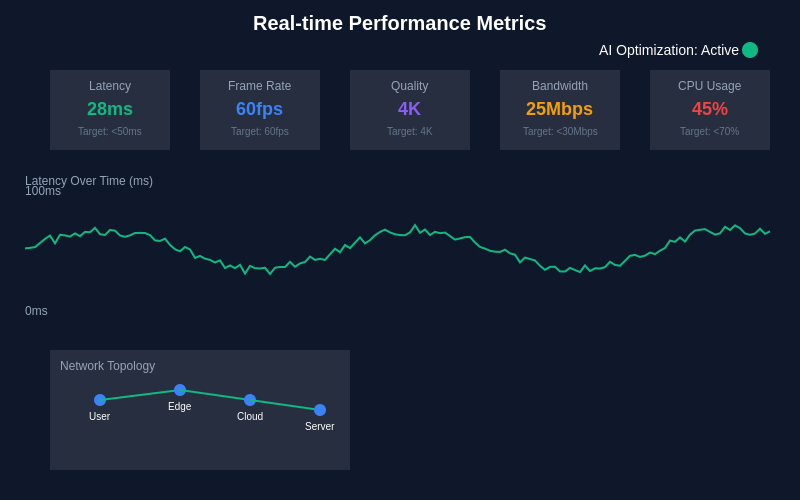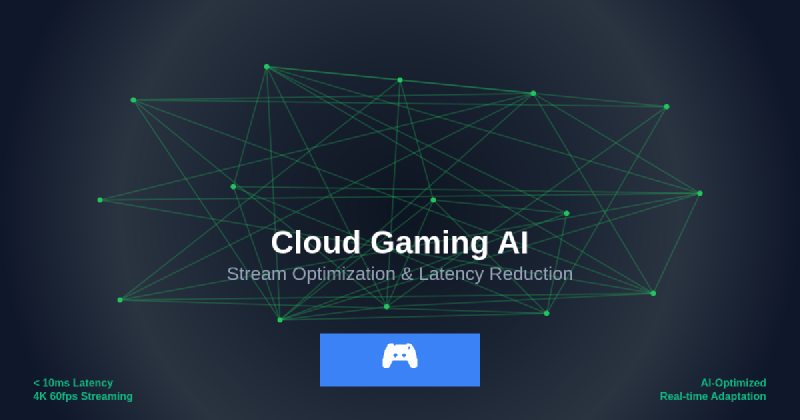The convergence of artificial intelligence and cloud gaming has ushered in a revolutionary era of gaming experiences that transcend traditional hardware limitations. As millions of gamers worldwide embrace the freedom of playing high-end games on any device through cloud streaming, the underlying infrastructure faces unprecedented challenges in delivering seamless, low-latency experiences that rival local gaming performance. The integration of sophisticated AI algorithms into cloud gaming platforms has emerged as the definitive solution to these technical hurdles, fundamentally transforming how game streams are optimized, delivered, and experienced across diverse network conditions and hardware configurations.
Explore the latest AI gaming innovations to understand the cutting-edge developments that are shaping the future of interactive entertainment. The marriage between artificial intelligence and cloud gaming represents more than a technological upgrade; it embodies a paradigmatic shift toward intelligent, adaptive gaming infrastructure that learns from user behavior, network conditions, and hardware capabilities to deliver personalized gaming experiences that continuously improve over time.
The Architecture of AI-Powered Cloud Gaming
The foundation of modern AI-enhanced cloud gaming platforms rests upon sophisticated neural networks that operate in real-time to analyze multiple data streams simultaneously. These systems monitor network latency, bandwidth availability, device capabilities, game complexity, and user preferences to make instantaneous decisions about stream quality, compression algorithms, and delivery optimization strategies. The AI infrastructure typically employs a multi-layered approach that includes predictive analytics for bandwidth fluctuations, machine learning models for compression optimization, and reinforcement learning algorithms that adapt to individual gaming patterns and preferences.
The complexity of managing thousands of concurrent gaming sessions while maintaining optimal performance for each user requires AI systems capable of processing enormous amounts of data in real-time. These platforms utilize distributed computing architectures where AI models operate at various levels of the infrastructure, from edge servers that handle initial stream processing to central systems that coordinate global optimization strategies. The result is a dynamic, self-improving ecosystem that becomes more efficient and responsive as it processes more gaming sessions and encounters diverse network scenarios.
Predictive Latency Mitigation Through Machine Learning
One of the most significant breakthroughs in AI-powered cloud gaming involves predictive latency mitigation, where machine learning algorithms anticipate network delays and proactively adjust game state predictions to maintain responsive gameplay. These systems analyze historical network performance data, current traffic patterns, and real-time latency measurements to predict when delays might occur and implement preemptive measures to minimize their impact on gaming experiences. The AI can identify patterns in network congestion, predict bandwidth degradation, and even anticipate user actions based on gameplay history to reduce the perceived latency between input and visual response.
The sophistication of these predictive systems extends beyond simple network monitoring to include game-specific optimization strategies that understand the unique requirements of different game genres. Racing games, first-person shooters, and real-time strategy games each have distinct latency sensitivities and optimization opportunities that AI systems can exploit to deliver genre-specific performance enhancements. By learning the timing patterns and critical response windows for different game types, AI algorithms can prioritize certain data streams, predict player movements, and pre-render likely scenarios to create seamless gaming experiences even under challenging network conditions.
Discover advanced AI capabilities with Claude for understanding complex optimization algorithms and system architectures that power modern cloud gaming platforms. The integration of predictive analytics into gaming infrastructure represents a fundamental shift from reactive to proactive optimization strategies that anticipate problems before they impact user experiences.
Intelligent Stream Quality Adaptation
The dynamic adjustment of stream quality based on real-time conditions represents another crucial application of AI in cloud gaming optimization. Traditional streaming systems rely on predetermined quality levels and basic bandwidth detection to adjust stream parameters, but AI-powered systems can make nuanced decisions that consider multiple factors simultaneously. These intelligent systems analyze not only available bandwidth but also device capabilities, game content complexity, user preferences, and even the specific areas of the screen where quality degradation would be most noticeable to human perception.
Machine learning models trained on vast datasets of gaming content can identify which elements of a game scene are most critical for gameplay and allocate encoding resources accordingly. For example, the AI might maintain high quality for user interface elements and action zones while reducing quality in background areas that don’t impact gameplay decisions. This selective quality adjustment ensures that the most important visual information remains crisp and responsive while optimizing bandwidth usage and reducing latency for less critical content areas.
Advanced Compression and Encoding Optimization
The application of AI to video compression and encoding has yielded remarkable improvements in cloud gaming stream efficiency. Neural network-based compression algorithms can achieve superior quality-to-bandwidth ratios compared to traditional encoding methods by learning the specific characteristics of gaming content. These AI systems understand the unique properties of rendered game graphics, including the prevalence of sharp edges, flat color areas, and predictable movement patterns that can be exploited for more efficient compression.
Modern AI compression systems employ temporal prediction models that analyze frame sequences to identify redundant information and optimize encoding decisions across multiple frames. This temporal awareness allows the AI to make intelligent trade-offs between spatial and temporal quality, ensuring that fast-moving action sequences maintain clarity while static elements are encoded with maximum efficiency. The continuous learning capabilities of these systems mean that compression performance improves over time as the AI encounters more diverse gaming content and refines its optimization strategies.
Real-Time Network Adaptation and Routing
AI-powered network optimization extends beyond simple bandwidth management to include intelligent routing decisions that can significantly impact gaming performance. Machine learning algorithms continuously analyze network topology, traffic patterns, and performance metrics across multiple potential data paths to select optimal routes for gaming traffic. These systems can predict network congestion, identify alternative routing options, and dynamically reroute gaming streams to maintain consistent performance even during peak usage periods or network disruptions.
The sophistication of AI-driven network adaptation includes the ability to coordinate between multiple edge servers and data centers to provide seamless handoffs as users move between locations or as network conditions change. This geographic load balancing ensures that gaming sessions maintain optimal performance regardless of the user’s physical location or the specific infrastructure challenges in their region. The AI systems learn from historical performance data to predict which servers and network paths will provide the best experience for specific users and gaming scenarios.
Access comprehensive AI research with Perplexity to explore the latest developments in network optimization and distributed computing architectures that enable global-scale cloud gaming platforms. The integration of AI into network management represents a fundamental evolution in how internet infrastructure adapts to real-time application requirements.
Personalized Gaming Experience Optimization
The personalization capabilities of AI in cloud gaming extend far beyond simple preference settings to include sophisticated behavioral analysis that optimizes every aspect of the gaming experience for individual users. Machine learning models analyze gameplay patterns, device usage habits, network environment characteristics, and even time-of-day preferences to create personalized optimization profiles that evolve continuously. These systems learn when users typically play certain types of games, what quality settings they prefer under different conditions, and how sensitive they are to various types of performance degradation.
The AI can predict user behavior patterns to pre-load game assets, warm up servers in anticipation of gaming sessions, and even adjust optimization strategies based on the specific games a user is likely to play. This predictive personalization ensures that the cloud gaming platform is always prepared to deliver optimal experiences tailored to individual user preferences and usage patterns. The continuous learning aspect means that the system becomes more accurate and effective over time, creating increasingly sophisticated personalized gaming experiences.
Edge Computing Integration and Distributed AI
The integration of edge computing with AI-powered cloud gaming represents a crucial development in reducing latency and improving performance for users regardless of their geographic location. AI algorithms distributed across edge computing nodes can make local optimization decisions while coordinating with central systems to maintain global performance standards. This distributed approach ensures that latency-critical decisions are made as close to the user as possible while benefiting from the collective intelligence of the broader AI system.
Edge-based AI systems can perform local stream optimization, implement region-specific compression strategies, and make real-time quality adjustments without waiting for communication with distant data centers. The coordination between edge and central AI systems creates a hierarchical optimization structure that combines the responsiveness of local decision-making with the comprehensive intelligence of centralized learning systems. This architecture ensures that cloud gaming platforms can scale globally while maintaining the low-latency performance required for competitive gaming experiences.
Quality of Experience Monitoring and Enhancement
AI-powered quality of experience monitoring systems represent a significant advancement in understanding and optimizing the subjective aspects of cloud gaming performance. These systems go beyond traditional technical metrics to analyze user engagement patterns, session duration, input frequency, and other behavioral indicators that reflect the actual gaming experience quality. Machine learning models can identify when technical performance issues are impacting user enjoyment and implement targeted optimizations to address specific experience degradation patterns.
The sophisticated analysis capabilities of these AI systems enable them to detect subtle performance issues that might not trigger traditional monitoring alerts but nonetheless impact user satisfaction. By correlating technical metrics with behavioral data, the AI can identify optimization opportunities that traditional monitoring systems might miss and implement targeted improvements that have measurable impacts on user engagement and satisfaction.

The comprehensive architecture of AI-powered cloud gaming platforms demonstrates the intricate coordination between multiple AI systems working in concert to optimize every aspect of the gaming experience. From initial stream generation through network delivery to final rendering on user devices, artificial intelligence continuously monitors, analyzes, and optimizes each component to deliver seamless gaming experiences.
Gaming-Specific AI Optimizations
Different gaming genres present unique optimization challenges that AI systems can address through specialized approaches tailored to specific gameplay characteristics. First-person shooters require extremely low latency for precise aiming and movement, while real-time strategy games can tolerate slightly higher latency but demand consistent performance for complex visual scenes. AI optimization systems learn these genre-specific requirements and implement targeted optimizations that prioritize the most critical performance aspects for each type of game.
The intelligence of these systems extends to understanding seasonal gaming patterns, popular gaming periods, and even cultural preferences that influence gaming behavior in different regions. This comprehensive understanding enables AI systems to anticipate demand patterns, pre-position resources, and optimize infrastructure allocation to ensure consistent performance during peak gaming periods and special events that drive increased usage.
Future Evolution and Emerging Technologies
The trajectory of AI development in cloud gaming points toward increasingly sophisticated systems that will blur the lines between local and cloud-based gaming experiences. Emerging technologies such as advanced neural rendering, real-time ray tracing optimization, and predictive game state management promise to deliver cloud gaming experiences that not only match but potentially exceed the performance of traditional local gaming setups. The continuous evolution of AI capabilities suggests that future cloud gaming platforms will be able to provide personalized, adaptive experiences that improve automatically based on individual user preferences and behaviors.
The integration of emerging AI technologies such as large language models for dynamic content generation, computer vision for enhanced stream optimization, and reinforcement learning for predictive user interface adaptation will create cloud gaming platforms that are more responsive, intelligent, and personalized than ever before. These developments will fundamentally change how games are designed, distributed, and experienced, creating new possibilities for interactive entertainment that transcend traditional hardware limitations.

The effectiveness of various AI-driven latency reduction techniques demonstrates significant improvements over traditional optimization methods. Through predictive algorithms, intelligent caching, and adaptive quality management, modern cloud gaming platforms achieve latency levels that approach local gaming performance while maintaining visual quality and responsiveness.
Implementation Challenges and Solutions
The deployment of AI-powered optimization systems in cloud gaming environments presents unique technical challenges that require innovative solutions and careful architectural planning. The real-time nature of gaming demands that AI systems make optimization decisions within extremely tight time constraints while processing enormous amounts of data from thousands of concurrent users. This requires specialized hardware architectures, optimized machine learning models, and sophisticated distributed computing strategies that can scale effectively while maintaining consistent performance.
The complexity of coordinating multiple AI systems across different geographic regions and infrastructure providers requires sophisticated orchestration capabilities that ensure consistent optimization strategies while accommodating regional differences in network infrastructure and user preferences. These challenges have driven the development of new approaches to distributed AI systems that can operate effectively in highly dynamic, performance-critical environments.
Economic Impact and Market Transformation
The integration of AI optimization into cloud gaming platforms has significant economic implications that extend beyond improved user experiences to include more efficient resource utilization, reduced infrastructure costs, and new opportunities for gaming industry business models. AI-powered optimization enables cloud gaming providers to serve more users with the same infrastructure investment while delivering superior experiences that drive higher user engagement and retention rates.
The efficiency improvements achieved through AI optimization create opportunities for cloud gaming services to reach new market segments, including users in regions with challenging network infrastructure and those using lower-powered devices that cannot support traditional high-end gaming. This market expansion potential represents a fundamental shift in the gaming industry toward more accessible, inclusive gaming experiences that are not limited by local hardware capabilities.

The comprehensive monitoring and optimization capabilities of modern cloud gaming platforms provide real-time insights into system performance, enabling continuous adjustment and improvement of the gaming experience. These sophisticated dashboards demonstrate the complex interplay of metrics that AI systems must balance to deliver optimal gaming performance.
Security and Privacy Considerations
The implementation of AI systems in cloud gaming platforms requires careful attention to security and privacy considerations, particularly given the sensitive nature of user behavioral data and the real-time processing requirements that limit traditional security approaches. AI optimization systems must balance the need for detailed user data analysis with robust privacy protection measures that ensure user information is protected while enabling effective personalization and optimization.
The distributed nature of AI-powered cloud gaming infrastructure creates unique security challenges that require innovative approaches to threat detection, data protection, and system integrity monitoring. These security considerations influence the design of AI systems and the architectural decisions that determine how optimization algorithms access and process user data while maintaining the performance levels required for competitive gaming experiences.
The future of cloud gaming lies in the continued evolution of artificial intelligence systems that can deliver increasingly sophisticated optimization capabilities while maintaining the security, privacy, and performance standards that users demand. As AI technologies continue to advance, cloud gaming platforms will become more intelligent, responsive, and capable of delivering gaming experiences that were previously impossible with traditional infrastructure approaches.
Disclaimer
This article is for informational purposes only and does not constitute professional advice. The views expressed are based on current understanding of AI technologies and their applications in cloud gaming systems. Readers should conduct their own research and consider their specific requirements when evaluating cloud gaming platforms and AI optimization technologies. The effectiveness of AI-powered optimization may vary depending on specific use cases, network conditions, and individual gaming preferences.
